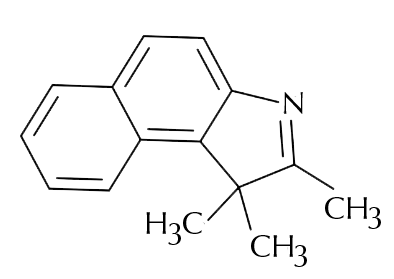What Is Petrolatum?
Petrolatum is commonly used as a moisturizer and barrier, protecting the skin from bacteria, allergens, and moisture loss. Petrolatum, also known as petroleum jelly, is a colorless or pale-yellow ointment. It is a mixture of hydrocarbons, which are compounds made up of hydrogen and carbon. Petrolatum is thought to be occlusive, meaning that it creates a barrier on top of the skin, acting to protect the skin from transepidermal water loss or TEWL and preventing infection or irritation by bacteria or allergens. This is important to support the skin’s natural barrier. The skin’s natural barrier is the first few layers of the skin and the natural oils that are produced by the skin. The skin barrier helps to protect the skin; however, disruption of the skin’s natural barrier has been linked with dermatitis, psoriasis, and eczema.
Petrolatum has become a staple of medicine cabinets since its discovery in 1859. It has historically been used to treat a multitude of ailments, including toenail fungus, nosebleeds, diaper rash, and chest colds.

Petrolatum
the good:Creates a protective barrier on the surface of the skin, preventing water loss and preventing bacteria and allergens from penetrating the skin.
the not so good:When properly refined petrolatum doesn’t cause any irritation or adverse effects, however, anecdotally, many experience dryness on the skin.
Who is it for?All skin types except those that have an identified allergy to it or congestive skin types.
Synergetic ingredients:Works well with most ingredients
Keep an eye on:Nothing to keep in mind here.
What Are the Benefits of Petrolatum?
Occlusive
In cosmetics and personal care products, petrolatum functions as an occlusive agent and skin protectant. Petrolatum is an occlusive agent that reduces the rate of water loss through the skin to air and the environment. Since petrolatum has a melting point that is close to body temperature, it softens upon application and forms a water-repellent film around the applied area. This film prevents evaporation of the skin’s natural moisture and increases skin hydration by causing a build-up of water in the stratum corneum or the outermost layer of skin. Furthermore, petrolatum has been shown to penetrate deeply into damaged skin and enhance the recovery of the skin’s barrier function. Maintaining a strong, intact barrier is essential to keep harmful things like allergens, bacteria, and irritants from entering the body through the skin.
Texture
Petrolatum can also be found in hair care products due to its ability to enhance the appearance and feel of hair. Acting as a coating on the surface of the hair follicle, petrolatum adds shine and texture to the hair. It also increases the silky feeling of the hair and may help to repair hair that has been damaged physically or by chemical treatment.
Wound healing
Another function of petrolatum is as a skin protectant. Petrolatum protects the skin after an injury by replicating the occlusive properties of the stratum corneum. When a wound is healing, the new, underdeveloped stratum corneum allows abnormally high levels of water loss. If too much water is lost, the area can become dehydrated. The state of dehydration signals to various cells in the epidermis to synthesize and release collagen. Unfortunately, when the body produces too much collagen, scarring can result. Applying petrolatum to a skin injury provides the newly formed stratum corneum with improved occlusion and aids in retaining optimum water levels. When the skin is adequately hydrated, the risk of scar formation decreases. This is why the American Academy of Dermatology recommends keeping skin injuries moist with petrolatum to reduce scarring.
Petrolatum is also widely used after minor surgical procedures. According to a publication in the Journal of Allergy and Clinical Immunology, a large randomized trial of postoperative ambulatory surgery patients found petrolatum to be equivalent to bacitracin, a topical antibiotic commonly used in the prevention of infections.
Is Petrolatum Safe?
When properly refined, petrolatum has no known health concerns. However, petrolatum is often not fully refined in the United States, which means it can contain toxic impurities such as polycyclic aromatic hydrocarbons. The National Toxicology Program considers polycyclic aromatic hydrocarbons as a class to contain reasonably anticipated carcinogens or cancer-causing substances.
Despite this potential health concern, petrolatum is approved by the US Food and Drug Administration for its indicated uses. The Cosmetic Ingredient Review Expert Panel has deferred the evaluation of this ingredient because the FDA has assessed safety.
References:
Ghadially, R, Halkier-Sorensen, L & Elias, P, 1992. ‘Effects of petrolatum on stratum corneum structure and function’, Journal of the American Academy of Dermatology, vol. 26, is. 3, pp. 387-396. Sethi, A, Kaur, T, Malhotra, S, & Gambhir, M, 2016. ‘Moisturizers: The Slippery Road’ Indian Journal of Dermatology, vol. 61, is. 3, pp.279-287. Czarnowicki, T et al. 2015. ‘Petrolatum: Barrier repair and antimicrobial responses underlying this “inert moisturizer”’, Atopic Dermatitis and Skin Disease, vol. 137, is.4, pp. 1091-1102.







